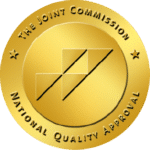In the US around 8 million people are suffering from PTSD. Though it’s a disorder commonly associated with veterans, PTSD can affect people from all walks of life. Here are a few things everyone should know.
Who Can Suffer From PTSD?
PTSD is a psychiatric disorder. It usually appears when a person deals with a traumatic experience. Many times PTSD will appear in the case of war veterans and those who’ve experienced military combat.
Combat veterans can be easily triggered by elements such as loud noises and fireworks commonly associated with summer. But, it’s important to remember PTSD does not discriminate. It’s not a disorder reserved only for our veterans. There are many other types of traumatic experiences that can lead to PTSD.
A diagnosis of PTSD requires exposure to an upsetting traumatic event. However, exposure could be indirect rather than first hand. For example, PTSD could occur in an individual learning about the violent death of a close family. It can also occur as a result of repeated exposure to horrible details of trauma such as police officers exposed to details of child abuse cases. Additionally, victims of sexual assault, trauma, violence, disasters, cancer, life-threatening illnesses, and physical abuse can also develop symptoms of PTSD.
What Are The Symptoms of PTSD?
As with any disorder, each person can experience PTSD differently. Some of the common symptoms of the disorder come post-trauma in the form of flashbacks, event recollections and even nightmares. Those who suffer can have difficulty sleeping, feel detached and emotionally numb, and avoid various places, people, and things that might remind them of their trauma.
According to Mayo Clinic symptoms include:
Intrusive memories
Symptoms of intrusive memories may include:
- Recurrent, unwanted distressing memories of the traumatic event
- Reliving the traumatic event as if it were happening again (flashbacks)
- Upsetting dreams or nightmares about the traumatic event
- Severe emotional distress or physical reactions to something that reminds you of the traumatic event
- Avoidance
Symptoms of avoidance may include:
- Trying to avoid thinking or talking about the traumatic event
- Avoiding places, activities or people that remind you of the traumatic event
- Negative changes in thinking and mood
Symptoms of negative changes in thinking and mood may include:
- Negative thoughts about yourself, other people or the world
- Hopelessness about the future
- Memory problems, including not remembering important aspects of the traumatic event
- Difficulty maintaining close relationships
- Feeling detached from family and friends
- Lack of interest in activities you once enjoyed
- Difficulty experiencing positive emotions
- Feeling emotionally numb
- Changes in physical and emotional reactions
Symptoms of changes in physical and emotional reactions (also called arousal symptoms) may include:
- Being easily startled or frightened
- Always being on guard for danger
- Self-destructive behavior, such as drinking too much or driving too fast
- Trouble sleeping
- Trouble concentrating
- Irritability, angry outbursts or aggressive behavior
- Overwhelming guilt or shame
For children 6 years old and younger, signs and symptoms may also include:
Re-enacting the traumatic event or aspects of the traumatic event through play or frightening dreams that may or may not include aspects of the traumatic event.
A Journey To Wholeness With Ketamine for PTSD
One of the areas of the brain that is affected by PTSD is the cerebral cortex. This part of the brain is partly responsible for the thought processes that occur during and after a trauma. The current understanding is that certain synapses within the brain fail to function properly during and after a traumatic event. These neurotransmitters then begin to misfire later on in life. Using Ketamine to treat PTSD stimulates the brain to release glutamate, which is a hormone that is associated with regrowth and regeneration within these critical neural synapses.
You can learn to replace your fearful and negative thoughts with positive ones. You can work through the trauma and allow your brain to reconnect the pieces into a whole story that can be processed and then rewritten. You can move forward with a sense of purpose and hopefulness for the future, and you can ease your fears and worries and learn to trust again.
We’re here to help!









